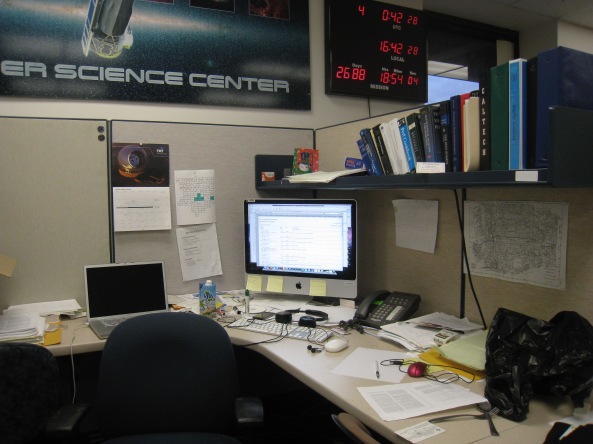This week I want to talk a bit about observing and TACs (Time Allocation Committees). Usually, when you want to observe at a big telescope, you must submit a proposal for your program. In that proposal you have to explain in detail what you want to observe and the scientific merits of your program among other things. Some telescopes (especially of the space variety) want to include how your program might relate to public outreach activities, other telescopes require an extensive list of your previous work, so that high quality and timely output is ensured.
All these things are graded by a group of people called the TAC. It is usually a group of people familiar with the facility and the scientific field of the proposal. However, large leeway can be made in either of these directions. If there is a time oversubscription, that is if the number of proposed observing hours exceed the number of available hours, then only the highest graded proposals will get any observing time. For highly sought after telescopes, such as the Hubble Space Telescope, the oversubscription rate can be as high as 10:1. Considering that only very few outright unfeasible or unscientific (aehm, bad) proposals get submitted, that is a lot of pressure on the TAC, making sure that only the best programs are selected. Every member has to carefully read the proposal and make personal notes, grades and comments, but each proposal gets discussed by the time the panel meets, to make sure that there are no conflicts of interest, personal vendettas or even to clear out some potential misunderstandings. The TAC then sends the recommendations and grades to the telescope scheduler, who actually has final say which programs get chosen. The proposer then gets the comments back with a likelihood with which the program will actually be observed.
During the last few years all of this was pretty much a black box to me. I submitted and submitted proposals. Sometimes I got the time, sometimes I didn’t. Sometimes the negative feedback was extremely helpful, sometimes… well, it really wasn’t and actually made me angry. Sometimes the feedback was a bit bizarre. A few examples (paraphrasing to make shorter): “This program is great, but the proposers should have asked for more time, so we chose to not give any time”, “This program is great, but the proposer is not senior enough”, “You have convinced us that red quasars are young, but we don’t think the young phase is really interesting”. And of course, there is the flattering comments: “This was the best proposal in its category, it should definitely be awarded time!” ha! Also, it seemed some telescopes were, hmmm, how to put this delicately, fairer than others, it was about the science and not about who you knew at the TAC.
In the last year I have now been part of the LBT TAC relating to the german time allocated. The AIP gets about 5% of the total observing time, since it is building the PEPSI high resolution spectrograph. Because the amount of time is so small, about 40 hours of observing time divided into 20 hours good time and 20 hours doubtful time, the TAC has to actually evaluate every science category and not just your field of expertise (which would be extragalactic science for me).
It has been an interesting experience to be sitting on the other side of the process (similar to being referee for a paper). As usual, I am always very impressed with all the good work that my colleagues are doing in astronomy. The following are a few things, I kind of picked up these last 3 TAC meetings and evaluations:
– It is not necessary to go for the home run (“this will fundamentally change our understanding in galaxy evolution”) – in baseball, as in science OBP – on base percentage (projects to work on) are the meat and potatoes. Describe to me your project in context of other work going on. It’s ok if your result will be just a grain of salt within a big field, but be sure to thoroughly make me understand that grain of salt and why it is important.
– Be very aware of the telescope / instrument you are applying for. Look, we all recycle our proposals for different telescopes, but you need to at least address why this instrument is best suited for your science. Otherwise, since I am trying to cut time among a lot of good projects, I will just tell you to propose at that other instrument (that you have access to), which is better suited. This is just like applying for a job and just replacing the name and institution in your cover letter – don’t! At least change your proposal somewhat to tailor it for the facility.
– This relates very much to the first point above, try to write a proposal without too much jargon in it. I know this is difficult, especially for graduate students. Believe me, practice makes perfect and you will become much better at it explaining you research to all different levels of an audience. For example, instead of saying “the M-sigma relation” write that the mass of the central supermassive black hole is related to many properties of its host galaxy. An expert will know what you mean with both statements, but a stellar astronomer might not have known everything about it.
I think those are the most important points. Of course, the actual process of the proposal (e.g. simulations or previous work) should be careful, precise and honest, but I assume that as a given. The actual TAC meetings are always fun. We are genuinely sad, even though we were looking for them, when points come up, that make your proposal unfeasible. I am definitely looking forward to continuing the work in the next few semesters.








